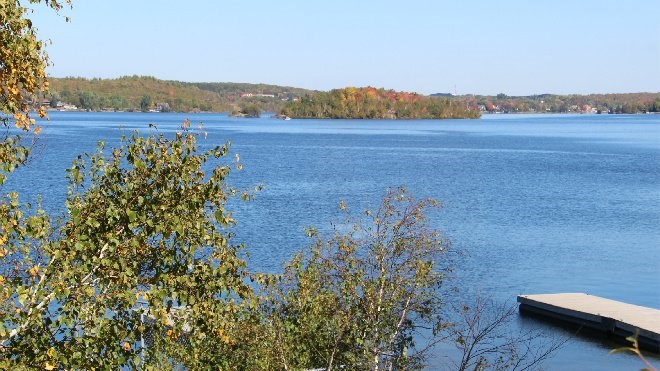A relatively new compound is showing great promise in addressing blue-green blooms, showing promising results in Europe and Ontario in recent years.
The product, Phoslock, has been approved in the European Union and the U.S. for several years, and has been tested in at least one lake in Ontario, under the supervision of the province.
In an unhappy way, blue-green algae warnings have become almost a normal part of summer in recent years. Public Health Sudbury have issued 10 warnings this year alone – including two last month – about blooms appearing in Clearwater Lake, Lake Nepahwin, Red Deer Lake and different parts of Ramsey Lake, where much of the city gets its drinking water.
The toxic blooms are spreading and becoming more common as a result of climate change. The blooms occur more frequently in warm lakes, rivers and streams, and are fueled by phosphorus and nitrogen in the water. As the average water temperature increases, so too do blue-green algae outbreaks.
Fertilizer, animal feces, leaky septic tanks, soaps of different types are all sources of phosphorus that feed the blooms. They can kill natural plant life, and the rotting material feeds even more blooms.
With no easy – and certainly no short-term – solutions to climate change, researchers have been trying to find a way to control the blooms by other means. That's where Phoslock comes in.
A number of case studies in the EU over the last decade have found Phoslock can dramatically reduce outbreaks, while doing no environmental harm to existing plant or animal life. Water bodies once covered in blooms and closed to the public are now transparent and open for recreational use.
Closer to home, the City of Markham used the product on Swan Lake, a former gravel pit that has become a popular community destination. When blooms became a significant problem, the town turned to Phoslock.
“It was a unique opportunity and we got approval from the ministry of environment to to apply it,” said Rob Muir, manager of stormwater in Markham.
The problem with Swan Lake was, to put it bluntly, goose poop. Efforts to control the geese population met with very limited success, Muir said.
“Every defecation event is so many grams of phosphorus, and so they eat the grass and then they go in the water,” he said.
What makes Phoslock so effective is it binds to phosphorus and “locks” it in the sediment, so it can't feed the algae blooms. The product is a non-toxic clay that draws phosphorus out of the water and locks it in the sediment.
After 25 tonnes of Phoslock was applied to Swan Lake in 2013, at a cost of about $100,000, phosphorus levels dropped by 60 per cent within 12 months. While that's a major impact, Muir said Phoslock is not a cure-all for the problem, but a tool to help make it less severe.
“We still have blooms,” he said, especially in shallow, stagnant areas where the Phoslock was less effective.
Since efforts to control the geese population largely are not effective, all that goose poop means phosphorus levels are rising again, he said. Another treatment will likely be necessary.
And, he said, Swan Lake is a closed water system, meaning no major rivers flow into or out of the area.
“You don't want to do it in a system where it can wash down into rivers, but this is a closed system so they gave us a green light,” Muir said.
That's not the case with most lakes in Sudbury, says Paul Javor, drainage engineer with Greater Sudbury. Ramsey Lake, for example, wouldn't be a good fit for the type of Phoslock treatment that worked in Swan Lake.
However, Javor says it does hold promise for another use. The city is currently undertaking watershed studies of Ramsey and other area area lakes and Junction Creek. One thing they're looking to identify are the major “outfalls” into Ramsey – basically, where stormwater drains into the lake after major rainfall.
Knowing where those drainage areas are will help shape the location and type of stormwater ponds that are built alongside residential developments.
In Minnesota, studies are being done on how to control phosphorus levels in the Upper Mississippi River Basin. Those studies are looking at building storm water ponds using clay infused with Phoslock. The idea, Javor said, is to see if the ponds can act as a filter, removing phosphorus before the stormwater finds its way back into the water body.
It's part of a toolbox of options the city is working on ahead of new rules for developers who want to build near lakes.
“It's called a treatment train,” Javor said. “We're going to give our development community real options they can use, ones that have been proven to be good.”
It's part of a broader strategy to educate residents on what they can do. One of the biggest sources of phosphorus locally, for example, are poorly maintained septic tanks that leach phosphorus and nitrogen into lakes. People washing their cars, pouring toxins of all sorts into the city drains, changing their oil over drainage grates – everything ends up in the lakes, Javor said.
“The city alone can't fix it,” he said. "We need the public to help us. It's a partnership. We all we all have responsibilities in the watershed.”
The city's watershed studies should go before council before the end of the year.
